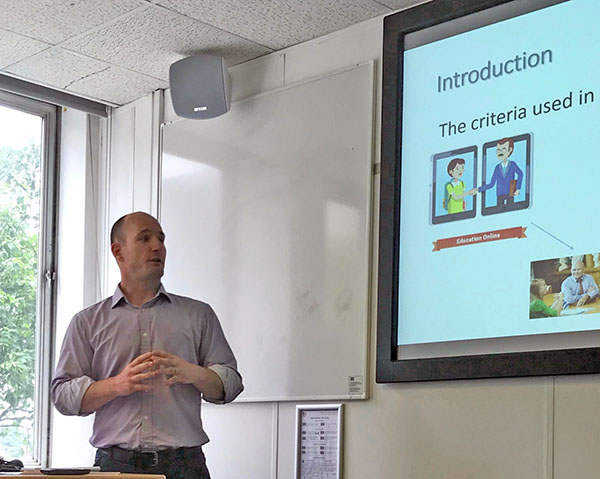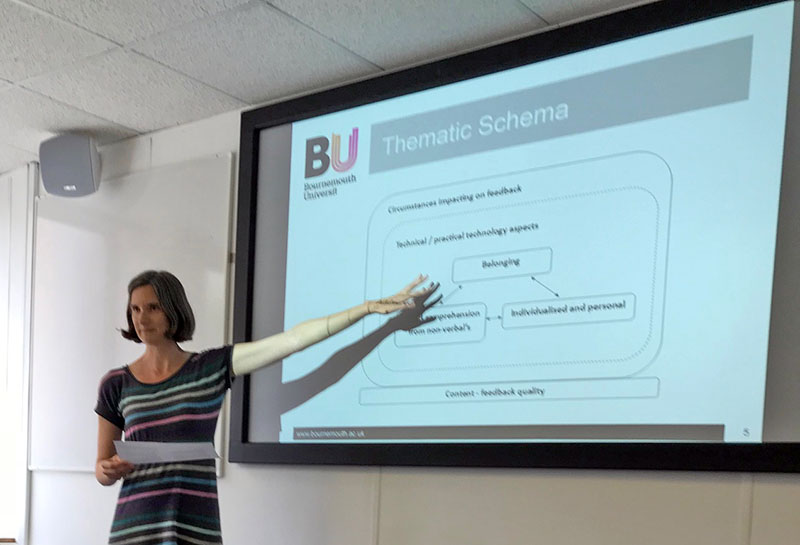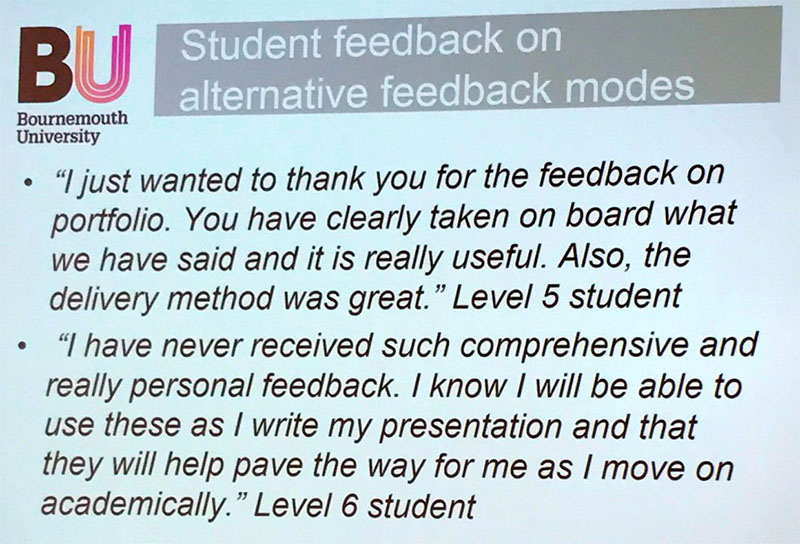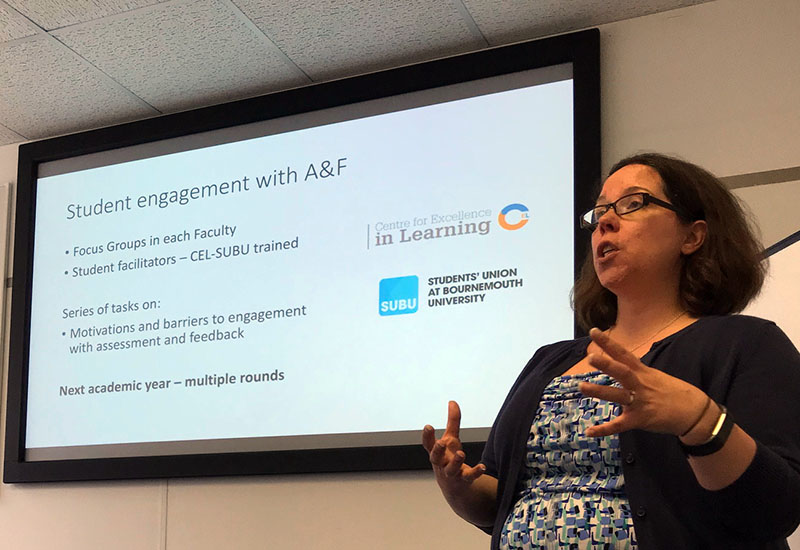This afternoon, the Assessment Fiesta for the department of Human Sciences and Public within HSS took place. Professor Debbie Holley opened the Fiesta and gave a short presentation on the wider context of education and the changing student demands over time, emphasising the role of assessment for education and inviting the attendees to make use of the resources available in CEL.
This was followed by 3 presentations.
1. Jonathan Williams led a fascinating workshop looking at how students engage in the assessment process. He began by asking questions about how academic staff understand the words often used in ILOs such as appraise, analyse, critique, reflect and synthesise. Discussing these in the session, it was clear that the attendees had slightly different understanding of these words and Jonathan expressed the need for there to be consistency of understanding in the minds of staff if the process of assessment and marking is to be equitable and fair.

Jonathan next raised some of the questions that students ask about assessment including whether the ILOs are equally weighted and how they should interpret the assessment criteria on the assignment brief; subject knowledge and understanding; intellectual skills; Subject specific skills and Transferable skills. Jonathan shared an example assignment brief that contained the weightings of the 4 assessment criteria and also a contextualised explanation of what the criteria meant in the specific subject area or unit. These listed how the areas were commonly demonstrated in assessments but also identified the common pitfalls that students should avoid.
Beyond the information available to the student in the brief, Jonathan also talked about the scaffolding that students receive about the assessment including time spent between staff and students to translate the academic language of the ILOs and assessments into words that make sense to students and providing examples from snippets of past assignments to be reviewed by students with regard to the assessment criteria. This is further supported by Panopto videos for students to watch.
The overall result is that students have a much clearer view of what the assessment is, how it is constructively aligned with the ILOs and how it will be assessed. In addition to the benefits of clarity of understanding, the process was also shown to reduce student anxiety about assessment which is vital to students’ mental wellbeing.
2. Clare Killingback ran the second session on using alternatives to written feedback for students. The alternatives encompassed audio (using Turnitin), video and screencast (using Panopto). Based on her own literature review, Clare identified the key aspects of these alternate feedback methods from the student perspective. These were:
- Sense of belonging. The sense that students can see and hear who is providing their feedback and that the students are much more than numbers on a feedback form.
- Content richness. How additional meaning can be gleaned in the feedback from non-verbals eg tone of voice.
- Individualised and personalised. Students enjoy receiving feedback that is personalised to them and their work.

These were three advantages of these alternate modes of feedback and Clare made the point that good quality feedback and feedforward is still vitally important, regardless of the medium.
Providing feedback using alternative methods also has the benefit of taking less time when compared to written feedback. Clare said the technology process, once mastered, was easy to use.
Clare noted that the medium for feedback on the unit was discussed with students at the beginning of the unit so that expectations were set from the outset. The feedback from students was very positive as the next image shows:

The overall conclusion is that these alternate methods of feedback can enhance the student experience, have benefits for academic staff too and therefore are definitely worthy of further investigation.
3. Shelley Thompson gave a presentation on ‘What do students want?”, an update on a recent and ongoing staff – student initiative that has the aim of understanding the motivators and barriers to assessment and feedback.

Student-facilitated groups asked fellow students about the assessments from which they learnt most, the clarity of assessment briefs and whether students had the ability make choices in assessments.
Using the medium of a storyboard, students are asked to map out the assessment journey that covers the process from start to finish and identified the barriers and motivators for assessment along the way.
Shelley said the plan is to share the storyboards in each Faculty so that staff and students have a better appreciation of the overall assessment process and how this can be used to identify improvements that enhance the student experience.
Shelley also had the attendees moving round the room to indicate their levels of agreement on questions including sardines and ice cream but also questions such as whether students engage in assessments for which there is no mark awarded.
This third presentation brought the assessment fiesta to an end.
At the end of the Fiesta, one delegate commented:
“… the sessions really created a lot of enthusiastic, friendly debate…you set exactly the right tone and really got everyone thinking and questioning their own attitudes. It’s great to take an afternoon out to go to an event and come away thinking that it was time very, very well spent.”
The Assessment Fiesta provided a fascinating opportunity to hear of the excellent assessment and feedback practices in HSS and there was much debate in the audience about how some of the ideas discussed during the fiesta could be incorporated into staff’s own programmes and unit.








